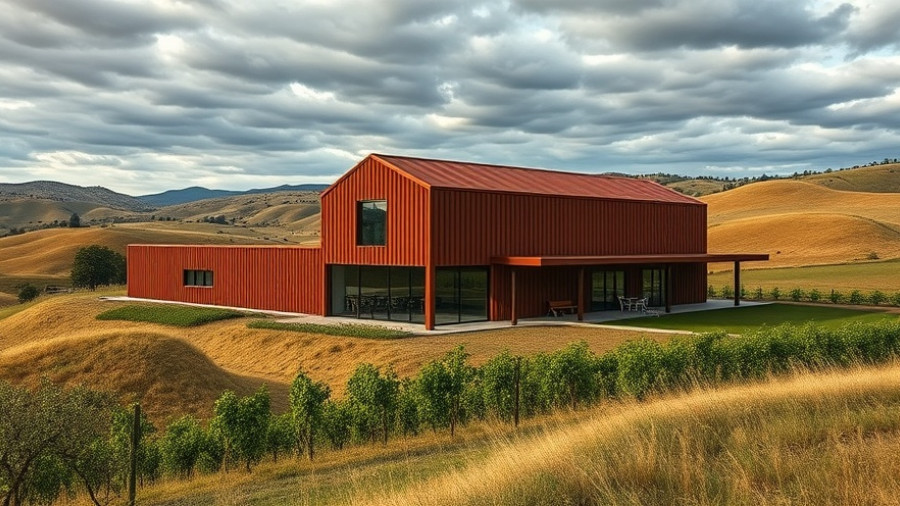
Revitalizing Tradition: The Tenute Maestrale Winery’s Architectural Vision
In the heart of Southern Sardinia, amidst the rolling vineyards and olive groves, the newly constructed Tenute Maestrale Winery stands as a testament to modern architectural innovation harmonizing with nature. Designed by the architectural firms Spaziozero and X Architekten, this impressive 1,500 square meter facility aims to not only produce wine but also become a landmark that resonates with its storied landscape.
Design Philosophy: Blending Artistry with Functionality
The project embodies the vision of co-founder Lorenzo Ciccu of Spaziozero, who emphasizes that the design is meant to blend seamlessly into the agricultural backdrop rather than stand out as an intrusive structure. This philosophy is vividly reflected in the winery's architectural elements which feature minimal, essential designs that respect the surrounding environment while also enhancing its utility for winemaking activities.
From Vineyard to Vinification: A Thoughtful Layout
The winery's layout is meticulously planned to reflect the winemaking process itself. Incorporating distinct zones for different phases—from the vat and barrique cellars for aging wine, to a dedicated space for product presentation—this architectural approach provides clarity and function. The spatial arrangement encourages a natural flow between production and presentation, reinforcing the connection between the work done and the outcome.
Using Materials to Create Harmony
Additionally, the choice of materials such as granite, marble, and tiles plays a pivotal role in establishing both aesthetics and longevity. With local granite and marble, the winery showcases the natural beauty of Sardinia while ensuring that its surfaces are durable and reflective of its surroundings. Collaborations with local fabricators and installers enhance both the authenticity and sustainability of the project.
Visual Connection to Landscape
One of the most striking features of the winery is its panoramic terrace, offering breathtaking views of the Parteolla region and the Gerrei mountains. This design fosters a visual dialogue between the winemaking facility and the scenic landscape, encouraging visitors to engage with both the architecture and the natural beauty that surrounds it.
Conclusion: A Model for Future Developments
As Tenute Maestrale embodies a harmonious relationship between tradition and innovation, it stands as a model for future architectural projects within agrarian landscapes. Each element—from design to functionality—has been woven together to create a winery not only for production but also for experience. It invites both locals and travelers alike to appreciate the artistry behind winemaking in a setting that honors the past while embracing the future.
 Add Row
Add Row  Add
Add 




Write A Comment